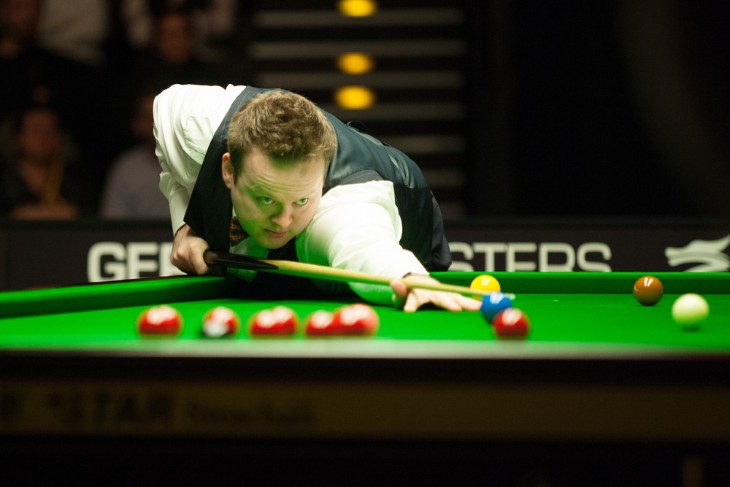- Major Record-Breaking Moments in Snooker History
- Techniques for Analyzing Players' Break-Building Skills
- Role of In-Play Betting in Highest Break Markets
- Statistical Insights into Highest Break Records
- Comparing Online and Offline Betting on Highest Breaks
- Influence of Tournament Formats on Highest Break Betting
- Profiles of Top Break-Builders in Snooker History
- Global Trends and Regional Variations in Frame Betting
- Conclusion
The concept of the 'highest break' in snooker betting1 is a critical element for enthusiasts and bettors alike. It refers to wagering on the player who will score the highest number of points in a single visit to the table during a frame. Understanding this concept is essential for anyone involved in snooker betting, as it requires not just knowledge of the players' skills but also an understanding of the game's dynamics. Here are some key points to consider:
- Definition of a Break: In snooker, a break is the total number of points scored by a player in a single turn at the table. The highest break possible is 147, also known as a maximum break, achieved by potting all reds with blacks followed by all colours in sequence.
- Factors Influencing a High Break: Several factors can influence a player's ability to score a high break. These include technical skill, psychological resilience, and the match's context. For instance, a player may be more likely to attempt a risky shot for a higher break in a less critical frame.
- Betting Strategies: When betting on the highest break, it's essential to consider the players' historical performance, their current form, and their break-building reputation. Some players are known for consistently making high breaks, making them safer bets in this market.
- Impact of Match Format: The format of the match can significantly influence the likelihood of high breaks. Longer formats provide more opportunities for players to score high breaks, whereas shorter formats might see more conservative play.
By understanding these nuances, bettors can make more informed decisions when engaging in highest break betting, adding an extra layer of strategy and excitement to watching snooker.
Major Record-Breaking Moments in Snooker History
The annals of snooker history are replete with moments where players have surpassed previous records, setting new benchmarks for the Highest Break in Frame. These milestones have not only elevated the players to legendary status but have also transformed the way the game is perceived and played. One such momentous occasion was when Ronnie O'Sullivan achieved a break of 147 in just 5 minutes and 20 seconds during the 1997 World Championship. This feat, often referred to as the "fastest maximum in history," showcased not just technical proficiency but also a remarkable speed of thought and execution.
Another significant chapter in the history of record breaks occurred with the rising dominance of players like Stephen Hendry in the 1990s. Hendry, renowned for his break-building ability, consistently set high standards in scoring, which in turn influenced a generation of players. These moments of high break scoring have been pivotal in shaping the tactical approaches and training regimes in modern snooker. They have also intensified the excitement around the Highest Break in Frame betting, as each tournament brings the potential for new records and unforgettable snooker moments.
Techniques for Analyzing Players' Break-Building Skills
Analyzing a player's break-building skills is crucial in predicting their potential for achieving the Highest Break in Frame in snooker. This analysis involves a blend of statistical scrutiny and subjective assessment of a player's form and technique. Here are some key aspects to consider:
- Statistical Analysis: Looking at a player's past performance, particularly their average break score and frequency of high breaks, can provide valuable insights. Statistics on maximum breaks achieved in both competitive and practice scenarios can also be indicative of a player's potential.
- Average Break Score: This metric shows the typical score a player achieves in a break, reflecting their consistency and scoring ability.
- Frequency of High Breaks: Regularly achieving high breaks is a strong indicator of a player's skill in break-building.
- Form and Technique Assessment: Observing a player's current form and their technical prowess is essential. Factors such as cue ball control, shot selection, and ability to handle pressure situations play a significant role in achieving high breaks.
- Cue Ball Control: Superior control over the cue ball allows for better positioning, which is crucial for maintaining a break.
- Shot Selection and Strategy: Good decision-making in shot selection, especially under pressure, significantly impacts a player's break-building ability.
By combining these analytical techniques, enthusiasts and bettors can gain a more nuanced understanding of a player's capability to score the Highest Break in Frame. This analysis not only enhances the betting experience but also deepens the appreciation of the skill and strategy involved in professional snooker.

Role of In-Play Betting in Highest Break Markets
In-play betting has revolutionised the way bets are placed on snooker, particularly in the market of the Highest Break in Frame. This form of betting allows gamblers to place bets during the match itself, offering dynamic odds that change as the game unfolds. The excitement of in-play betting lies in its immediacy; bettors can gauge the form and momentum of players in real-time, making more informed decisions. For instance, if a top player starts a match strongly, the odds for them achieving the highest break may shorten quickly, reflecting their perceived likelihood of success.
Moreover, in-play betting introduces a strategic element to wagering on the Highest Break in Frame. Bettors must stay acutely aware of the game's flow, making quick decisions based on unfolding events. This immediacy adds an exhilarating layer to watching snooker, as each frame could potentially alter the betting landscape. However, it also demands a greater level of engagement and understanding of the game, as the rapidly changing odds require quick analysis and decision-making.
Statistical Insights into Highest Break Records
Gaining statistical insights into records for the Highest Break in Frame is essential for bettors and enthusiasts looking to understand trends and probabilities in snooker betting. Here are some key statistical areas to consider:
- Historical Data Analysis: Examining past records of highest breaks in major tournaments can offer valuable insights. This includes looking at:
- Frequency of Maximum Breaks (147): Understanding how often maximum breaks occur in professional play can help gauge their likelihood in future matches.
- Player-Specific Break Records: Analyzing individual players’ highest break records, both in career terms and recent form, can indicate their potential in upcoming matches.
- Tournament-Specific Trends: Different tournaments may have varying frequencies of high breaks, influenced by factors like table conditions and player line-ups.
- Impact of Table Conditions: Slicker, faster tables often favour higher break-building, as they allow greater cue ball control.
- Player Line-Ups: Tournaments with a higher calibre of break-building players typically see higher average break scores.
By delving into these statistical aspects, bettors can obtain a more comprehensive understanding of the Highest Break in Frame market. This approach not only enriches the betting experience but also provides a deeper appreciation of the sport's nuances and the skills of its top players.
Comparing Online and Offline Betting on Highest Breaks
The comparison between online and offline betting in the context of the Highest Break in Frame offers a fascinating insight into the evolving landscape of sports wagering. Online betting platforms have revolutionised the way bettors engage with snooker, providing a level of accessibility and convenience that traditional bookmakers struggle to match. These platforms offer real-time updates, comprehensive data analytics, and a wider array of betting options, including live betting during matches. For bettors focused on the highest break in a frame, online platforms provide instant access to player statistics, historical data, and predictive models, enhancing the decision-making process.
In contrast, offline betting, though less prevalent in the digital age, still holds a certain appeal. The physical experience of visiting a bookmaker, the social interaction, and the traditional aspect of placing bets in person continue to attract a segment of bettors. However, when it comes to speed and accessibility of information pertinent to the Highest Break in Frame, offline betting can be at a disadvantage. The limited availability of real-time data and the slower pace of updating odds can impact the decision-making process in fast-paced snooker matches.
Influence of Tournament Formats on Highest Break Betting
The influence of different tournament formats on betting for the Highest Break in Frame is a critical aspect for bettors to consider. In snooker, tournament formats can vary significantly, from short sprint matches in early rounds to extended multi-session matches in finals. These variations can have a profound impact on players' strategies and, consequently, on the likelihood of high break scores.
- Short Format Matches: In shorter formats, players might adopt a more conservative approach, focusing on securing the frame rather than risking an attempt at a high break. The pressure to win quickly can lead to fewer opportunities for players to build substantial breaks.
- Long Format Matches: Longer formats, such as those seen in the World Championship, allow players more time to settle into the match. This can lead to more strategic play and increased chances of high breaks, as players have multiple frames to recover from any early mistakes.
Understanding these nuances is crucial for bettors. In tournaments with longer formats, the probability of witnessing high breaks, including the coveted maximum 147, increases. Bettors should therefore adjust their strategies based on the format of each tournament when considering bets on the Highest Break in Frame. This understanding not only enhances the betting experience but also adds an extra layer of strategic engagement with the sport.

Profiles of Top Break-Builders in Snooker History
Delving into the profiles of top break-builders in snooker provides valuable insights into what it takes to consistently achieve the Highest Break in Frame. These players are not just skilled cueists but also exhibit a remarkable blend of mental fortitude, strategic acumen, and technical precision. A quintessential example is Ronnie O'Sullivan, often hailed as one of the greatest snooker players of all time. O'Sullivan's ability to compile high breaks rapidly and under pressure has set him apart in the annals of snooker history. His agility, intuitive understanding of the game, and flawless cue ball control contribute significantly to his break-building prowess.
Another prominent figure is Stephen Hendry, who dominated the snooker scene in the 1990s. Hendry was renowned for his aggressive and confident approach to break-building, often opting for risky pots that would intimidate opponents while setting up for high breaks. His record of seven World Championships is a testament to his ability to consistently score the Highest Break in Frame under intense competitive pressure. The legacy of these players extends beyond their records; they have influenced generations of players, elevating the standards of break-building and transforming snooker into a more dynamic and strategic sport.
Global Trends and Regional Variations in Frame Betting
The landscape of betting on the Highest Break in Frame in snooker varies significantly across different regions of the world, reflecting diverse cultural attitudes towards gambling and the popularity of snooker. In the UK, where snooker has a rich history and a strong fan base, betting on the highest break is a popular activity among enthusiasts. The UK betting market offers a wide array of options and is supported by advanced online betting platforms. On the other hand, in countries where snooker is less popular or where betting laws are more restrictive, such as the USA or certain parts of Asia, the market for highest break betting is less developed. Here are some key global trends and regional variations:
- UK and Europe:
- High engagement in snooker betting, with a focus on online platforms.
- Availability of detailed statistics and analytics for informed betting.
- Asia:
- Growing interest in snooker, particularly in China, leading to an emerging betting market.
- Cultural differences influencing betting practices and preferences.
- North America:
- Limited snooker betting due to the sport's lower popularity compared to pool or billiards.
- Potential for growth with increasing exposure to international snooker tournaments.
Understanding these regional differences is crucial for global betting platforms and bettors, as it influences market offerings and betting strategies.
Conclusion
In conclusion, the practice of betting on the Highest Break in Frame in snooker encapsulates a fascinating interplay between skill, strategy, and chance. From the historical evolution of break records to the cutting-edge technologies shaping future betting strategies, this aspect of snooker betting offers a rich tapestry of insights. It underscores not only the technical prowess of the players but also the evolving nature of sports betting in the digital era. As snooker continues to grow globally, the dynamics of highest break betting are likely to evolve, influenced by regional trends, technological advancements, and the ever-changing landscape of the sport itself. This arena offers both challenges and opportunities for bettors, demanding a deep understanding of the game, strategic thinking, and an appreciation of statistical and technological tools.




.webp)


 (1).webp)




















